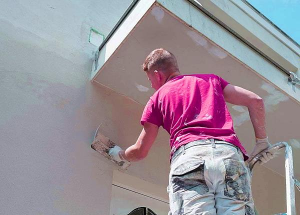Exterminators typically use harsh chemicals to kill pests. They often offer no guarantee and are not interested in discussing long-term solutions with their clients.
If your pest problem is severe or putting your health at risk, you may want to consider hiring an exterminator. They can also provide preventive services, such as repairing entry points and changing your lifestyle to make your property less attractive to pests. Contact PermaKill Exterminating now!

Professionalism is a word that defines the manner in which people conduct themselves in their work. It is often associated with a high standard of conduct and a code of ethics. It also includes skills and competence in the job. In the context of pest control, professionalism is the ability to identify and respond to pest infestations quickly and effectively. Professional exterminators are trained in the identification and control of a wide range of pests, including ants, cockroaches, mice, fleas, bees, and termites.
Pest infestations can be dangerous to health and safety. For example, a rodent infestation can lead to food contamination and structural damage, while insects can cause allergic reactions in humans and pets. These pests can also spread diseases. Mosquitoes can spread diseases such as encephalitis, dengue, zika, and chikungunya, while fleas can spread typhus, plague, and Lyme disease. In addition to addressing the immediate threat of pests, exterminators may also work in outdoor environments to manage and control pest populations in parks, recreational areas, golf courses, residential yards, and agricultural fields.
A good exterminator is one who demonstrates the highest standards of professionalism. This means that they must adhere to industry regulations and practices, be knowledgeable about the latest developments in the field, and follow proper work safety procedures. In addition, a good exterminator will strive to provide quality service and customer satisfaction.
Unlike an exterminator, pest control professionals focus on the root causes of pest infestations rather than just eradicating them. For example, instead of spraying a house with poisonous chemicals to kill pests, they might use baits or traps to eliminate them, or offer advice on sanitation practices and structural repairs that can prevent future infestations.
The term “exterminator” is misleading, as it evokes images of people armed with pesticides destroying bugs and rodents. However, the term exterminator is still widely used in advertising for a company that provides pest control services. In the past, ads often featured graphic images of hammers hitting pests or bombs dropping on them. While this approach may be effective in the short term, it does not address the underlying problem.
Safety
If pests have invaded your home or office, you need a professional exterminator in Oklahoma City to help you get rid of them. Pests are more than just a nuisance; they can cause health problems and damage property. Whether you have ants marching across your kitchen counter or mice scurrying in your office, the presence of pests can be very stressful. Fortunately, you can rest easy knowing that a professional exterminator will eliminate the problem and make your home or office feel like your own again.
A typical job for an exterminator includes a wide range of responsibilities, including inspections and monitoring. They also use various chemicals and traps to manage and eliminate infestations of insects and rodents. This may include pesticides, repellents, and other organic products. In addition to these products, they may also use mechanical devices, such as pheromone traps and insect growth regulators, to control pests.
Another important aspect of this type of work is customer education. Oftentimes, pest infestations are caused by improper food storage or inadequate cleaning of the environment. Taking active measures to prevent future infestations can be very helpful, and a professional can help you develop these strategies.
When a customer first calls an exterminator, they usually give a brief description of the problem and what they have done to try to solve it. This information is vital to the exterminator, as they will need it in order to prepare for the job. It is also a good idea for the customer to clear all clutter from areas that will be treated.
Once the exterminator has gathered this information, they will perform an initial inspection of the premises. This will allow them to confirm their suspicions or uncover an entirely different situation. For example, a customer might think they have a cockroach infestation but it could actually be a flea problem.
When the exterminator has a clear understanding of the situation, they will start to eradicate the infestation. They will then notify the customer of what they have done and provide any additional information that is necessary.
Reputation
If you want to hire an exterminator, you need one that has a good reputation. A company with a solid reputation has a strong business model and is committed to providing high-quality pest control services. They also use safe and environmentally friendly pest control methods. Additionally, they prioritize customer safety and satisfaction. This ensures that your family, pets, and the environment are not exposed to harmful chemicals.
Reputation is a measure of how much people respect, admire, and trust someone or something. It is based on the perceived quality of an individual’s character, actions, and accomplishments. A person with a positive reputation is viewed as reliable, trustworthy, and competent. However, a person with a negative reputation is seen as unreliable and incompetent.
Many reputable exterminators offer a wide variety of pest control services. These include termite and cockroach extermination, mosquito extermination, and bed bug removal. They also offer recurring services and pest prevention programs to help keep your home pest-free. Moreover, these companies have experience in treating various types of pests and are licensed and insured.
A reputable exterminator should have years of experience and a good track record. They should be able to treat a wide range of pests and offer competitive prices. They should also be able to provide you with a free inspection of your home. This will allow you to evaluate their service and determine whether they are a suitable choice for your needs.
In the past, many exterminators focused on destroying pests rather than protecting their customers. Their ads featured graphic images of pests being hit with hammers or bombed. While the effectiveness of this approach was limited, it reflected the widespread notion that pests should be eradicated quickly. However, with the advent of DDT, this view changed and the emphasis was placed on prevention instead of extermination.
Western Exterminator is a leading pest control company that offers comprehensive treatment plans for homeowners. Their technicians will inspect the entire house for free, and they will develop a pest protection plan tailored to your needs. They also provide weed control for lawns and trees, minor construction, and home improvement services. They are a top choice for homeowners in Arizona and California.
Cost
If you are experiencing a pest infestation, an exterminator can provide safe and effective solutions to eradicate them. These professionals use safer methods to eliminate pests, which are less likely to cause harm to your family or pets. In addition, they can offer long-term prevention methods that prevent pests from returning. These measures include addressing moisture problems, sealing off entry points and using traps or baits.
Exterminator pricing depends on the type and severity of the problem. For instance, minor infestations of common household pests like ants, cockroaches and fleas may only require a single treatment, costing around $100. More serious infestations of termites or bed bugs will generally be more expensive. A pest control company can provide you with a price estimate upon inspection of the problem.
A professional exterminator has a wide range of equipment and chemicals at their disposal to eliminate various types of pests, including insects, rodents, and even small animals. These tools and products are often much more effective than the DIY methods that people try to use at home. Exterminators can also help prevent pests from returning by removing their food sources and limiting access to water and shelter.
On average, a pest control service costs about $50 to $200 for a home inspection and a one-time treatment of pests. However, the costs can vary depending on the severity of the pest infestation and whether or not a homeowner is concerned about the health of their pets. For example, mosquitoes spread diseases such as malaria, ticks and fleas carry Lyme disease, and roaches can cause leprosy.
The average cost of an exterminator is $150 to $600 for a chemical pest removal, with prices typically higher for larger properties or homes with extensive pest infestations. Some companies also offer organic pest control options for homeowners who are sensitive to standard chemicals. These treatments are usually more expensive than the traditional methods, but they can be effective at eliminating most pests.
An exterminator can treat any pest that is causing problems at your home or office. They can provide services such as pest inspection, one-time extermination or removal, recurring treatments and preventative measures. In addition, they can treat outdoor pests such as moles and groundhogs. These treatments may be more expensive than indoor treatment because of the size, complexity and relative danger involved in trapping and relocating these wild animals.


